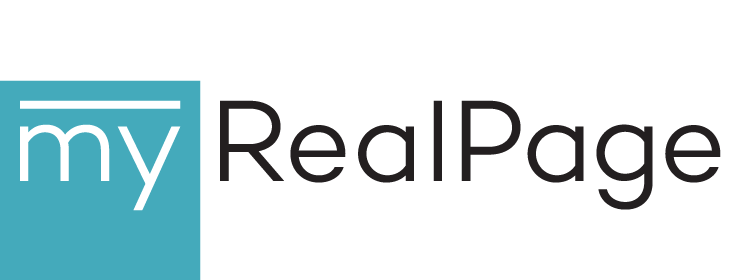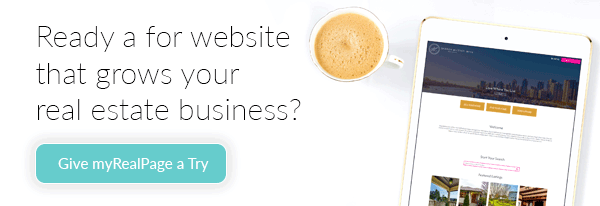The Ultimate Real Estate Listing Presentation Checklist

Your Instagram content puts you on a stranger’s radar.
Your testimonials get you on a lead’s “maybe list.”
And your real estate listing presentation gets you to your client’s house — and into a contract.
The importance of a real estate listing presentation can’t be overstated.
So then why do so many real estate agents wing it? Rest on their laurels? Assume they’re already doing it as well as they possibly can?
Because it’s a standard part of the job. Like writing listings, many agents assume they’ve “got it.”
Time for a refresher. We’re breaking down the real estate listing presentation and identifying the biggest opportunities to shine — and how to make the most of them.
This is your ultimate real estate listing presentation checklist.
Flexibility
The last year has proven that a real estate agent’s ability to adapt is essential to their success. The need for that kind of flexibility isn’t going anywhere. In fact, it’s the first thing you’ll need to ace your listing presentations.
Your presentation content and delivery need to be strong, confident and consistent, no matter the circumstances.
If your potential client feels more comfortable with a virtual presentation, you should be prepared to deliver one that’s just as good as the in-person version. If your potential client interrupts with questions or insists you skip over a part, that shouldn’t derail you.
Expect the unexpected, prepare for all circumstances and be confident in what you have to offer. Your ability to be flexible is what will help you ace the presentation, no matter what.
Strong and Consistent Design
Next on the list: a well-designed presentation.
When you’re busy speaking to your potential client, the look of your presentation is also communicating.
The branding, photos, colours, layout, amount of text and the consistency of all the above are sending subtle (or not so subtle) messages to your lead.
Grainy, low-resolution photography says I’m not the best when it comes to the world of tech and digital.
Too much text says I’m not confident that I can communicate what I need to by speaking alone.
Inconsistent design says I don’t pay attention to detail.
A lack of any design says I don’t have much taste or creativity.
You don’t have to take a design course to put together an attractive, professional-looking presentation. If you keep text to a minimum, make sure your colours and fonts reflect your personal real estate brand (and are consistent) and ensure all photos are crisp and high-resolution, you’re in good shape.
If you want a bit of help, consider hiring a graphic designer to put together a listing presentation template that you can use and tweak for every presentation. It’s a very small investment (likely only a few hours of work) and what you’ll get in return is a perfectly branded document that you will use again, and again, and again.
Well-defined value proposition(s)
By the end of your listing presentation, you want your prospective client to have a clear sense of what the case is for hiring you.
To make that happen, you need to be communicating those reasons throughout your listing presentation. You need to have specific, well-defined value propositions.
Your value proposition or propositions need to offer a strong answer to one question: “Why should I hire YOU?”
Maybe it’s that you have a real estate niche. Or specialized training. Or a reputation in the local market that goes back years and years.
Then, find a way to make your value props about your lead. Translation: position your value propositions as a way to serve your client.
You don’t have to state your value propositions over and over again, but you do need to weave them throughout your listing presentation, making sure that they’re part of the foundation for everything you do, show and say.
Relevant and timely statistics
Showing up to your listing presentation armed with data is par for the course for any good agent.
But what you really need to show up with is data that is relevant, current and specific.
You may not talk through every single data point you’ve collected, but having them prepared means you can reference them at a moment’s notice if your lead asks or if you need to make a point during the meeting.
We recommend finding and preparing data for the following categories:
- The local market. Statistics on average selling price for the current and preceding months, as well as year-over-year comparisons.
- The neighbourhood. Sold data for homes in the area for the current and preceding months, as well as year-over-year comparisons.
- The street. Sold and listing data for homes in the area for the current and preceding months, and comparisons to the year prior.
- Direct comparables. If possible, seek out data for two or three listings from the past six months that are a close match for your potential client’s home (housing type, neighbourhood, size and features).
A clear-cut action plan
People like leaders with a plan. And sellers like real estate agents with a plan.
Take your prospective client through exactly what it is that you’d do for them, should they give you the listing.
Start with what happens right after you agree to work together. Then, continue to run them through preparing the listing, specific marketing efforts, open house strategy and, finally, to accepting the offer.
Keep it high-level enough that your pace remains engaging, but get specific enough to show the value of your plans, and how they’re tailored to this particular lead.
Your goal here is to show your potential client that you’re already thinking about their unique situation and how you can help.
Results
Testimonials are amazing on your website and in your marketing efforts. But they’re not quite as powerful in a real estate listing presentation.
What does grab a lead’s attention is results. Numbers. Stats. Awards.
These could include:
- Days on market
- Sold over asking
- Number of sales in a year
- Industry rankings
If possible, pepper these in throughout your presentation where relevant, rather than saving them all for one page.
For example, mention your industry awards and rankings when you’re giving a quick introduction to yourself. Mention your impressive days-on-market performance when talking about listings and open houses. And mention sold-over-asking data when talking about closing the deal.
By doing this, you position your results as an opportunity for success for your lead. Not simply your bragging rights.
Prepared answers
The listing presentation is an opportunity for your potential client to ask you their burning questions. To put you in the hot seat.
It’s an opportunity for you to look confident, secure and unflappable. Which is what a client wants in their agent.
Of course, answering tough questions can be nerve wracking. Your best defense is preparation.
Draft a list of the tough questions that buyers like to ask. Then, prepare your answers. Write them out, read them aloud, and tweak them until you feel like you can answer them naturally and confidently — and that the answers will satisfy your potential client.
A takeaway
Most potential clients are going to want some time after the listing presentation to reflect on everything they heard, and decide whether or not you’re the agent for them.
To help sway or solidify their decision, leave them with something to consider or peruse. Something that summarizes and emphasizes the reasons to work with you.
This could be a tailored version of your listing presentation or a designed (and personalized) printout, like a postcard or a one-pager. Or maybe it’s a follow-up email, with a condensed and customized report that sums up some of that key market data for their area, as well as your plans and goals for their listing.
It’s something remember you by — and hire you by.
What’s the number one question you get from potential clients during a listing presentation?
Last Updated on June 28, 2024 by myRealPage


